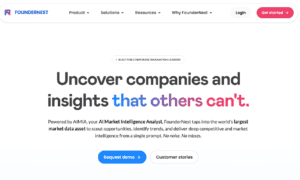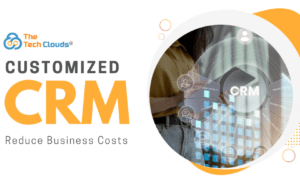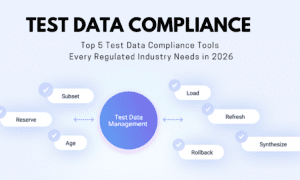The financial markets have undergone a profound transformation over the past two decades. From the rise of high-frequency trading to the democratization of investing through mobile platforms, technology now drives market access, execution speed, and user experience. For fintech companies, brokerages, and financial institutions, investing in trading platform software development services is not just a competitive advantage, it’s an operational necessity.
This article explores how to approach trading platform software development from a strategic perspective, covering architecture, compliance, integrations, and emerging trends.
Understanding Trading Platform Software Development Services
Trading platform software development services encompass the design, development, deployment, and ongoing support of systems that allow users to buy, sell, and manage financial instruments. These instruments can range from equities and derivatives to cryptocurrencies and digital assets.
Core components often include:
- Order Management System (OMS) for handling order lifecycle.
- Market Data Feeds for real-time pricing and analysis.
- Risk Management Tools for margin, exposure, and compliance checks.
- User Interfaces optimized for both desktop and mobile.
- APIs for integration with external services or custom tools.
Why Companies Invest in Custom Development
Competitive Differentiation
In a market saturated with generic platforms, custom development enables businesses to implement unique trading strategies, proprietary analytics, and tailored user experiences.
Scalability & Performance
Prebuilt solutions may struggle under high transaction volumes or complex order types. Custom platforms can be designed for low-latency execution and horizontal scaling.
Compliance & Security
Financial software must meet stringent regulatory requirements (e.g., MiFID II, SEC, FINRA, GDPR). Custom solutions allow you to embed compliance into core architecture rather than patching it in later.
Authoritative source: FINRA’s Technology Guidance outlines the regulatory and operational considerations for trading platforms.
Types of Trading Platforms and Their Requirements
| Platform Type | Primary Users | Key Features | Unique Considerations |
| Retail Trading Platforms | Individual investors | User-friendly UI, education tools, market news | Gamification, ease of onboarding |
| Institutional Platforms | Funds, banks, prop traders | Low latency, bulk order execution, analytics | Advanced security, algorithmic trading support |
| Crypto Exchanges | Traders, investors | Wallet integration, KYC/AML checks | Blockchain connectivity, token listing process |
| Multi-Asset Platforms | Brokers, portfolio managers | Unified dashboard, multi-market execution | Complex risk modeling, cross-margin systems |
Key Stages in Trading Platform Software Development
Requirements Analysis
Defining the asset classes, target users, geographies, and compliance frameworks early ensures architectural alignment.
Architecture & Technology Selection
Choose between microservices, modular monoliths, or hybrid approaches. Consider technologies like FIX protocol for market connectivity and WebSockets for real-time updates.
Core Feature Development
This phase includes order execution logic, charting libraries, account management, and analytics modules.
Integrations
Essential connections include:
- Liquidity Providers for market depth.
- Clearing Houses for settlement.
- Third-Party Analytics for enhanced insights.
Testing & Regulatory Approval
Rigorous functional, performance, and security testing is followed by certification from relevant exchanges or regulators.
Security and Compliance in Trading Platforms
Security is non-negotiable in trading platform software development services. Measures include:
- End-to-End Encryption for data in transit and at rest.
- Multi-Factor Authentication (MFA) for user access.
- Role-Based Access Control (RBAC) for internal users.
- Audit Trails for transaction history.
Compliance frameworks depend on jurisdiction but may include:
- KYC/AML checks for identity verification.
- GDPR for data protection in the EU.
- SOX for financial reporting integrity.
Authoritative source: ISO/IEC 27001 provides globally recognized best practices for information security management.
Emerging Trends Shaping Trading Platform Development
6.1 AI-Driven Insights
Machine learning algorithms are increasingly embedded in trading platforms for predictive analytics, anomaly detection, and personalized recommendations.
6.2 Blockchain Integration
Beyond crypto trading, blockchain is being used for settlement systems and transparent auditing.
6.3 Mobile-First Design
With an increasing number of trades executed via smartphones, mobile UX and performance optimization are now critical.
6.4 Embedded Finance
Trading functionalities are being integrated into non-financial platforms, expanding the potential customer base.
Choosing the Right Trading Platform Development Partner
When selecting a vendor for trading platform software development services, consider:
- Proven Experience in Finance — Look for prior work in capital markets.
- Regulatory Expertise — Familiarity with your target jurisdiction.
- Post-Launch Support — Continuous monitoring, updates, and scaling assistance.
- Transparent Pricing Models — Avoid hidden costs by clarifying the scope and SLA terms.
Long-Term Maintenance and Evolution
Launching a trading platform is only the beginning. The most successful systems evolve continuously:
- Regular Feature Updates to meet user demands.
- Security Patching to address emerging threats.
- Performance Optimization to handle growing user bases.
- Regulatory Adaptation as laws change.
Conclusion
The demand for the trading platform software development services will only grow as markets become more digital, competitive, and regulated. Whether you’re building for retail traders, institutional investors, or emerging asset classes, a well-designed platform can be the core driver of your business growth.
By focusing on scalability, compliance, and user experience and by partnering with experts who understand both technology and finance, you can create a platform that stands out in a crowded marketplace and adapts to future trends without sacrificing performance or security.



































